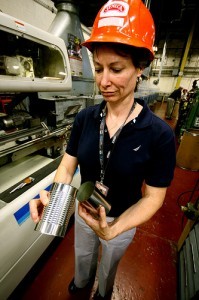Manufacturing has a long, turbulent history in the United States. Factories provided millions of people with livelihoods that in the best situations allowed for a white-collar lifestyle in a job with blue-collar status.
But factories have never been glamorous. For most of the 20th century, factories were considered to be low-status places, with manufacturing executives, managers and workers ranking well below those at other companies in terms of prestige.
No more. Japanese, German, Korean and other car companies proved that manufacturing could be a well-regarded specialty, a way to earn respect from customers, and a smart training ground for anyone who wanted to rise within the hierarchy. Now, it’s rare that a CEO or senior manager at an American company gets to the top without manufacturing experience.
What’s the best way to learn about this complicated subject? Your crash course in manufacturing has these elements:
History
Learn everything you can about the history of the company you are covering, its union – if it has one – and the products that your company builds. The roots of a company often determine its corporate culture and its manufacturing processes, decades and even centuries after the company was started. Look for historians, books and documentaries about your subject. Ask your sources for recommendations.
Study manufacturing concepts
Manufacturing is taught in business school classes under the heading of Operations Management (OM). If you have the time, enroll in at least one semester of an OM course.
Find the real experts
Do a Web search for your company and see which experts are quoted the most frequently – then keep reading deeper into the search. As with any topic, the people who are quoted most frequently may not be the true experts. Many professors who are experts on your company are busy visiting its factories here and overseas and are selective about talking to reporters. But you will find a way to get them to talk to you. Other experts on a manufacturer are often people who used to work there. When you see a notice that an executive has retired, track him or her down and ask if you can pick his or her brain. The same with retired labor leaders. You also can check universities and institutes in your area for their list of experts.If you don’t, find a professor, and ask for a tutorial. At minimum, get the class syllabus, and do the readings for the class. Most OM classes are organized in the same way, usually by case studies of different companies and the problems that they have faced. In studying OM, you’ll see how the field has progressed.
Conferences
The good news is that manufacturing experts love to attend conferences. The bad news is that those conferences can be so technical that only the experts can understand what’s being said in those seminars. Conferences are great for source development and for presentations on concepts that people are talking about. Use them as a jumping-off point for further research on trends that are developing in your industry.

Factory tours
Whenever you’re offered the opportunity to take a factory tour, GO. You may feel silly wearing safety glasses or steel-toed shoes or those funny suits that you have to don before you’re allowed in a plant’s “clean room.” We all do. But you can learn something from every factory. Each has its own personality. Do not hesitate to ask questions. Manufacturing people love it when visitors take an interest in their field. Their language may be technical, but in manufacturing, knowledge is shared by teaching.
Learn to understand factory layouts
All factories have things in common: inventory enters at one end, finished products leave at the other. But the interior of every factory is different. Have a public relations person or manufacturing expert show you a layout of the factory before you take a plant tour. If you have a working knowledge of the way the plant operates, you will be able to get more out of the tour once you’re inside.
Dealing with unions
It can be maddeningly difficult to cultivate sources inside a union. Some local leaders have been burned by what they feel are unfavorable stories. Often, the national office does not want leaders of individual locals to talk to reporters. Relationships are best built when you can find someone to introduce you. Union conventions offer great opportunities to develop sources that can pay off later. Go to the cocktail hours, and the receptions for the individual union locals from your area.
Understand factory hours
Manufacturing people often start early – 6 a.m. is a common starting time for an automobile plant. Likewise, the night shift generally comes in around 2:30 p.m to 3 p.m. If you’re offered an interview in the hours just after dawn, do not complain about the time. Just make a joke about “factory hours.” Additionally, if you want to catch workers from the day shift as they are leaving a plant, get to a factory around 2 p.m.










